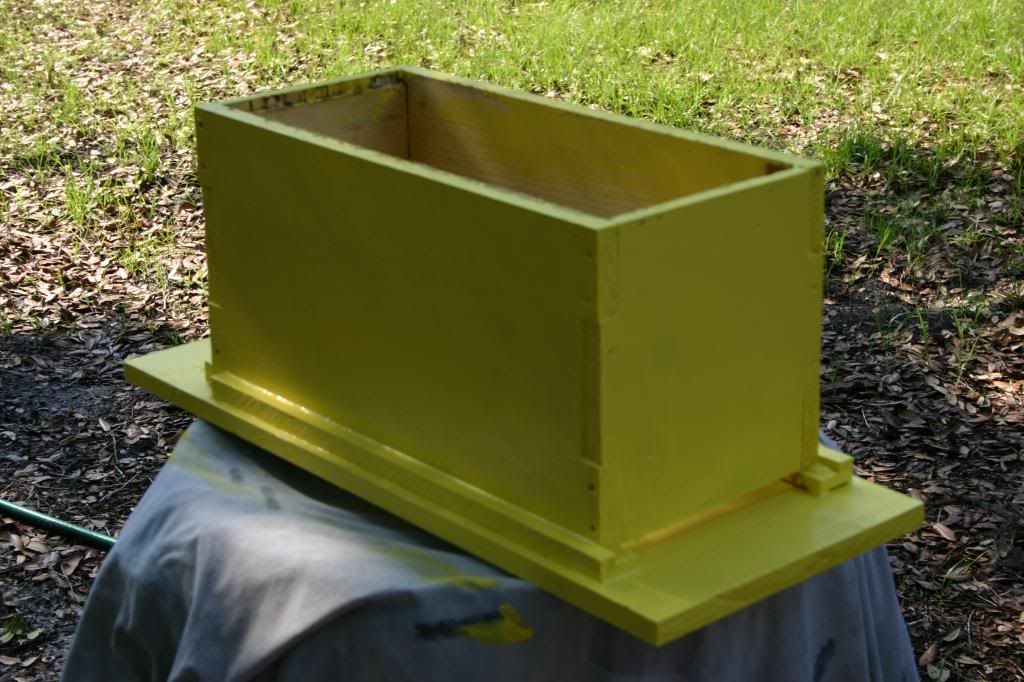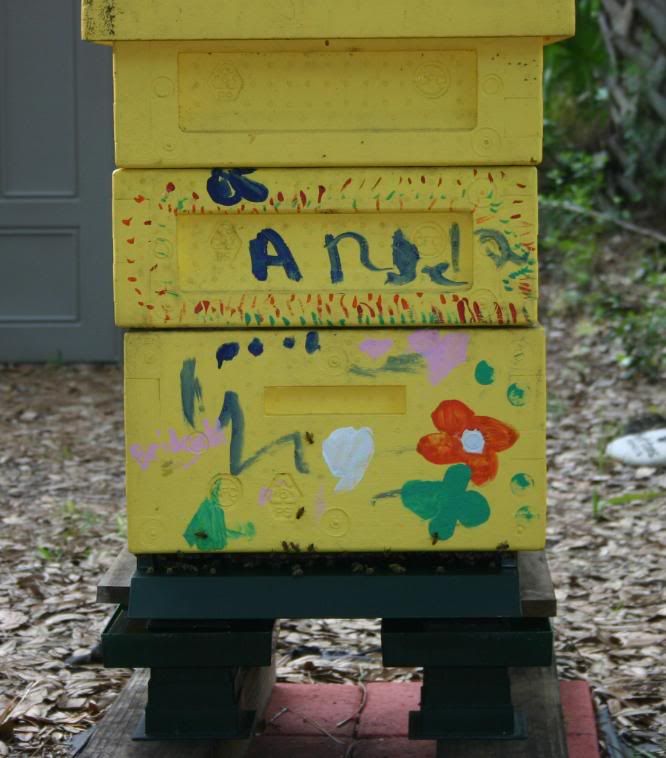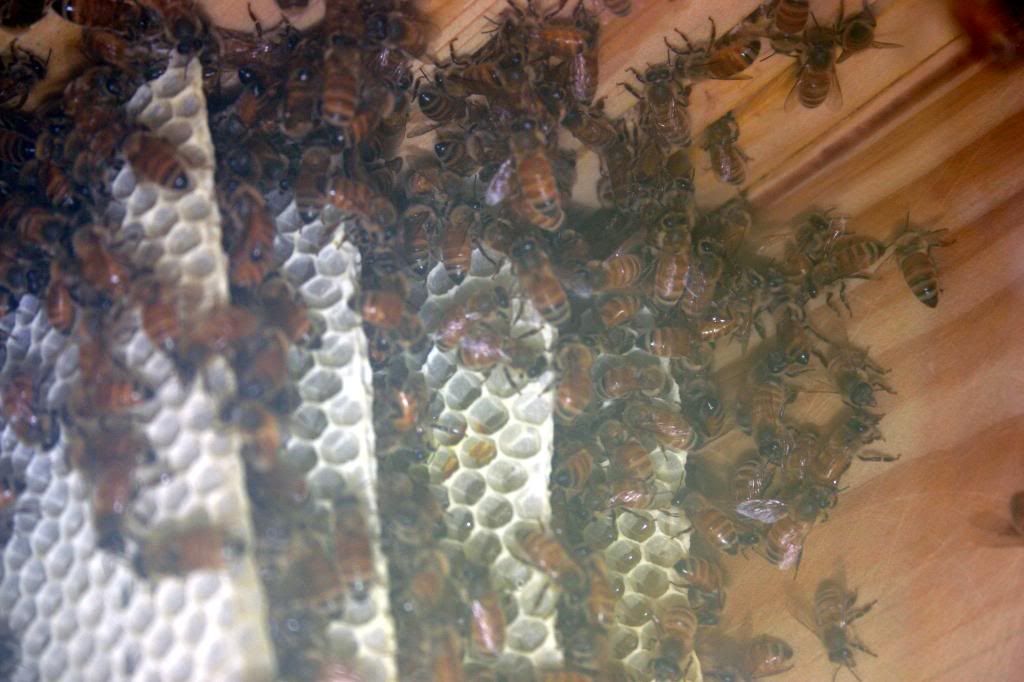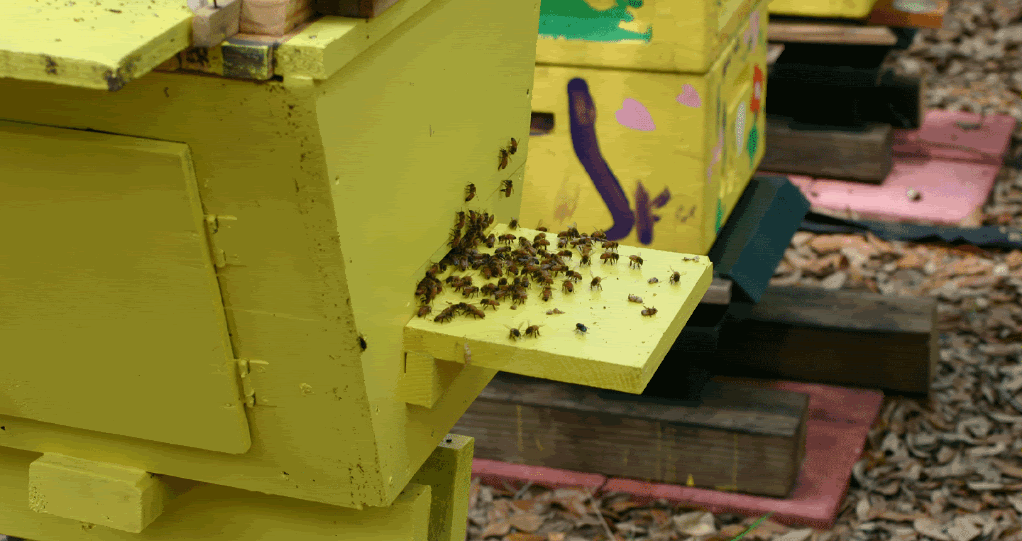I’m somewhat puzzle by what I saw today. It most likely has been a very stressful month for the bees. Up until this past weekend we had not seen any rain fall for over a month, and wild fires had all of Brevard County on edge. Thankfully not too close to my home to worry about them, but close enough for the winds to bring a constant smell of smoke for a several days.
I did some rearranging of the apiary. Trying to make it look neater and preparing in case of hurricane. I can tie down each of the hives (not including the TBH). The new base also lifts the hives more so I have to bend down even less now. It had to be a husband and wife effort to lift the hives and move them back. All she said was “If I get stung I’m going to kill you”
I did a light inspection but enought to see that something is missing from each of the pictures below, what is it?? Can you tell?

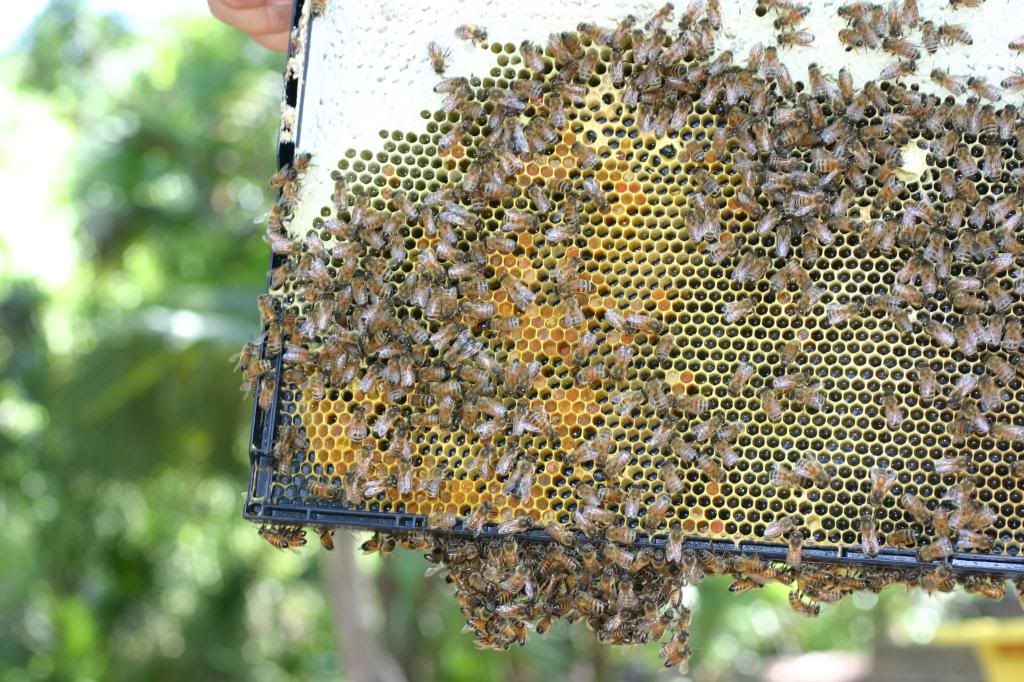 The NUC really has done nicely with its limited space. 75% of the medium body has been drawn out. For their great effort they get a deep 5 frame body with the foundationless plastic frames, but as good as they look something is missing here too.
The NUC really has done nicely with its limited space. 75% of the medium body has been drawn out. For their great effort they get a deep 5 frame body with the foundationless plastic frames, but as good as they look something is missing here too. Aside from the one frame (from the supper) that I pulled out of my original hive that should not have the one thing missing ……. what is missing??????? Anyone see any brood or eggs? I didn’t …… anyone know why?? There are two ponds with in 50 feet so is not lack of water. The hives had plenty of honey stores and pollen stores. so why is no one laying???? Are there queens? Not much I can do now. I’ll wait two more weeks and go in for a full queen search, and maybe prepare to combine hives.
Aside from the one frame (from the supper) that I pulled out of my original hive that should not have the one thing missing ……. what is missing??????? Anyone see any brood or eggs? I didn’t …… anyone know why?? There are two ponds with in 50 feet so is not lack of water. The hives had plenty of honey stores and pollen stores. so why is no one laying???? Are there queens? Not much I can do now. I’ll wait two more weeks and go in for a full queen search, and maybe prepare to combine hives.









